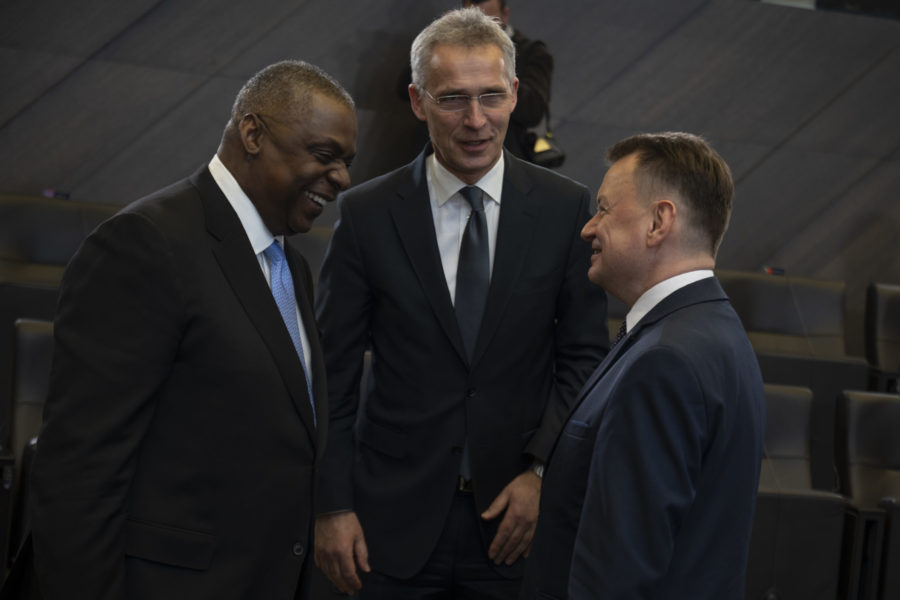NATO defense ministers decided March 16 that they will augment military, financial, and humanitarian support to Ukraine and that they will drastically increase longer-term defenses for NATO’s once-neglected eastern flank.
But NATO still opposes direct intervention in Ukraine or a no-fly zone.
“Today, ministers agreed that we must continue to provide significant support to Ukraine,” NATO Secretary-General Jens Stoltenberg said at a press briefing in Brussels following the ministerial.
The secretary-general underscored NATO’s position that it will not send in troops and not enforce a no-fly zone despite repeated calls by Ukrainian President Volodymyr Zelensky, who has taken to making direct appeals to the legislative bodies of the United Kingdom, Canada, and the United States, virtually addressing the U.S. Congress on March 16.
“They reinforced the message of the importance of providing support with equipment, advanced equipment, air defense systems, anti-tank weapons, and many other types of support, but no NATO deployment of air or ground capabilities in Ukraine,” Stoltenberg added. “We have a responsibility to ensure that this conflict, this war, doesn’t escalate beyond Ukraine.”
In remarks before the start of the meeting, Defense Secretary Lloyd J. Austin III said the unscheduled defense ministerial was proof of a united NATO in support of Ukraine.
“Our presence here sends a signal for the world that we remain united in our support of Ukraine,” Austin said. “We condemn Russia’s unprovoked and unjustified invasion into Ukraine.”
Austin again reiterated the U.S. commitment to NATO’s Article 5 principle of collective defense. The United States has some 100,000 troops in Europe. NATO has at its command 40,000 troops from member states, of which the majority are positioned in the east.
Stoltenberg said that will not be enough going forward.
“We must reset our collective defense and deterrence for the longer term,” he said.
Military commanders have been tasked with developing plans across all domains, including “substantially more forces in the eastern part of the alliance, at higher readiness.”
Stoltenberg said it was not until Russia invaded Ukraine and annexed Crimea in 2014 that NATO began to strengthen its eastern defense, and not until 2016 did NATO begin to position combat troops in the east.
Stoltenberg said there would be more pre-positioned equipment and supplies, strengthened integrated air and missile defense, and more allied airpower. At sea, it would mean carrier strike groups, submarines, and combat ships on a “persistent basis.” More training and exercises, and in greater numbers, will follow.
Asked if the forces to be positioned on the eastern flank would be permanent, Stoltenberg demurred, saying that was a political decision.
A NATO eastern flank official told Air Force Magazine that NATO is doing “more of the same” and that the Pentagon is “still rather cautious in long-term posture considerations.”
NATO heads of state will meet March 24 to discuss the changes needed for the alliance’s longer-term security. President Joe Biden is expected to attend the meeting in Brussels.
Stoltenberg also said there are no signs that Russia is serious about a cease-fire in its peace talks with Ukraine.
“On the ground, we don’t see any sign, and that’s the reason why we also call on Russia to engage in these talks in good faith,” he said.
“What Ukraine can achieve around the negotiating table is very closely linked to the situation on the battleground,” Stoltenberg added. “Therefore the support we give to them to stand up against and to resist the Russian invasion also helps them to achieve an acceptable outcome in the negotiations.”
